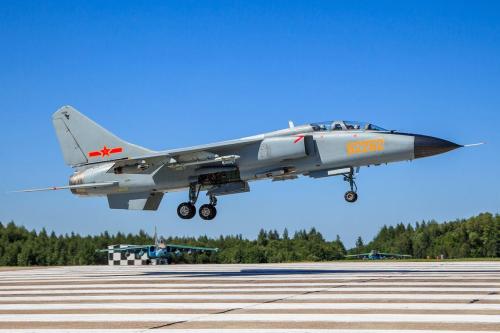Pavel Bukanov
Translated by google
2020-10-10
Nowadays, the Air Force fighters are updated very quickly, but there is one type of fighter that is very unusual. From its service in the 1990s to today, it is still active at the forefront, taking on the backbone task of attacking the sea to the ground. It is the famous JH-7, also known as the "Flying Leopard" fighter. Why has the Flying Leopard fighter not retired today?
As a meritorious fighter, the Flying Leopard was undoubtedly a mainstay in the 1990s. It was a third-generation fighter. At that time, only it was able to launch mid-range air-to-air missiles, followed by the Su-27UBK fighter we imported from Russia. After the Su-30MKK/2 was equipped, this fighter became the main air dominance fighter, and the main mission of the Flying Leopard fighter became the attack on the sea and the ground.
The fate of Flying Leopard is actually quite rough. As a fighter project jointly developed by the navy and air force, the requirements of the two sides in terms of specific performance are very different. Later, the Air Force basically withdrew from the Flying Leopard project. The insistence of the Navy made the Flying Leopard finally become a reality from the drawing. For the navy, it has advantages in range and ammunition. It is the fighter with the largest combat radius among the Air Force fighters in the 1990s. Coupled with its good aerial combat capabilities, the Flying Leopard is also called a "fighter bomber."
At the beginning of the 21st century, the Flying Leopard ushered in an upgrade in the field of avionics, and then the JH-7A fighter appeared with the most complex avionics system among our fighters at that time. At this time, the Flying Leopard received the Air Force’s Recognized and began to equip the air force in large numbers. The biggest difference between JH-7A and JH-7 is that the color of the radome has been changed to black, and the take-off weight and combat radius have been improved. The JH-7A can carry up to 9 tons of ammunition and has a combat radius of more than 1,800 kilometers. This result is not inferior today. Of course, when the JH-7A is fully loaded with ammunition, its mobility will also decrease, requiring other fighters to escort.
Even more commendable is that the JH-7A fighter is very cheap. The price at that time was only more than 20 million U.S. dollars, which was only half of the imported price of Su-30MKK at that time. Therefore, the scale of the Flying Leopard fighters has rapidly increased to several hundred, and they have become the backbone of the real sea-to-ground attack. The only one that can replace it is the J-16 fighter that only appeared a few years ago.
It is foreseeable that before the F-16 fighters form a scale advantage, the Flying Leopard fighters will still take on important tasks, and it is best to stand on guard!
Xian JH-7 Fighter Bomber: Details





No comments:
Post a Comment